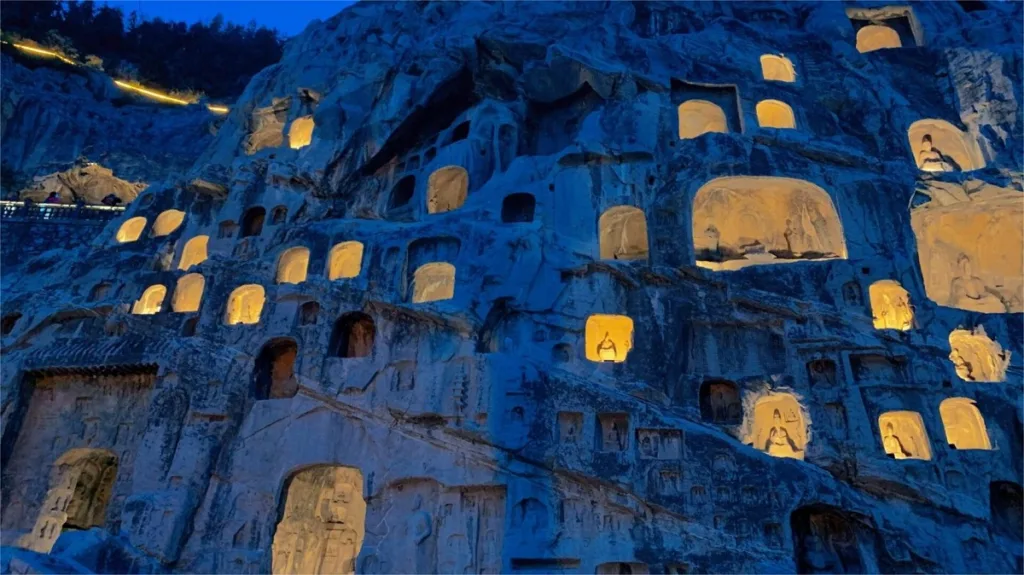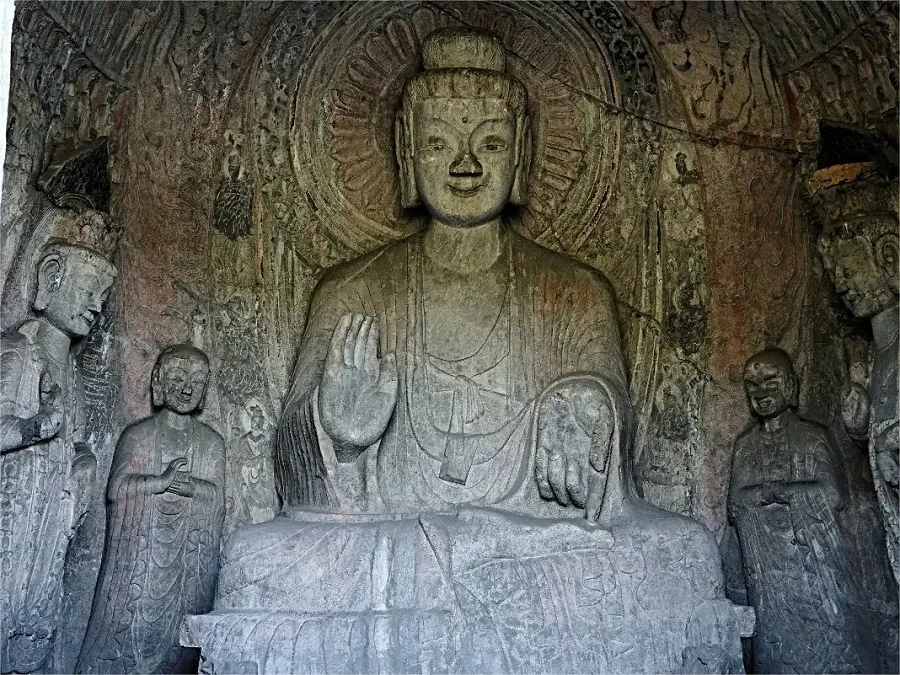Binyang Caves in Longmen Grottoes


Binyang Caves (宾阳洞) in Longmen Grottoes, formerly known as Lingyan Temple (灵岩寺), consist of three caves: Binyang Central Cave, Binyang North Cave, and Binyang South Cave. Carved during the first year of the Jingming era of the Northern Wei Dynasty (500 AD), these caves have a history of over 1,500 years. Binyang Caves were initiated by Emperor Xuanwu of the Northern Wei Dynasty to commemorate the historical achievements of Emperor Xiaowen and Empress Wen Zhao, including the relocation of the capital to Luoyang and the implementation of sinicization reforms. They are the only stone caves mentioned in China’s official historical records. Construction of the Binyang Caves spanned 24 years and involved over 800,000 workers. Despite of the enormous investment, during the Northern Wei Dynasty, only Binyang Middle Cave was completed, with Binyang South Cave and Binyang North Cave finished during the Sui and Tang Dynasties.
Bingyang North Cave

The North Cave, initiated during the Northern Wei Dynasty and completed in the early years of the Tang Dynasty (641-650 AD), features a prominent statue of Amitabha Buddha. The intricate halo behind the Buddha is adorned with flame motifs, adding vitality to the scene. The main statue of Amitabha Buddha in the Binyang North Cave is depicted in a unique “scissors-hand” gesture, which is a rare Buddhist mudra. In this mudra, the right hand is raised with the palm facing upward, the thumb, ring finger, and little finger are bent, while the index and middle fingers are extended. The left hand is lowered with the palm facing downward, the ring finger and little finger are bent, and the other fingers are extended. This mudra conveys a sense of strong determination and willpower. Due to erosion causing the thumb to disappear and the gap between the index and middle fingers to widen, the statue resembles the popular “scissors hand” gesture, leading to humorous nicknames such as the “Scissors-hand” Buddha among internet users.
Bingyang Central Cave

Constructed from the first year of the Jingming era to the fourth year of the Zhengguang era (500-523 AD), the Binyang Central Cave boasts a plan resembling a horseshoe, with a domed ceiling. It measures 12 meters deep, 10.90 meters wide, and 9.3 meters high. Adorning the central wall are the main statue of Shakyamuni Buddha seated, along with two disciples and two Bodhisattvas. On both the northern and southern walls stand one Buddha and two Bodhisattvas each. These sculptures exhibit slender figures, gentle expressions, and graceful demeanors, representing the characteristic “delicate and refined style” popular during the late Northern Wei period.
The floor is decorated with lotus flower patterns, symbolizing a lotus pond. In the center of the ceiling is a relief sculpture of a blooming lotus flower, surrounded by eight celestial musicians and two offering deities, all draped with flowing curtains resembling a lotus canopy. The front wall features large relief sculptures depicting the transformation of Vimalakirti, Prince Siddhartha feeding a tiger, Prince Sudhana’s act of charity, the Empress and Emperor worshipping Buddha, and ten Guardian Kings.
In 1978, to protect the cave’s carvings, the brick roll-up door was removed, revealing once-hidden sculptures such as the four-headed, four-armed and one-headed, four-armed Dharmapalas (protective deities).
Binyang South Cave

The Binyang South Cave was initiated during the Northern Wei Dynasty and completed during the Sui Dynasty (595-616 AD). The main statue of Amitabha Buddha exhibits a plump face, thick lips, and natural, flowing robes. The sculptures in this cave blend the robust and majestic style of the Northern Wei Dynasty with the lively and dynamic style of the Tang Dynasty, representing a transitional period in artistic expression. The numerous inscriptions found within the cave provide valuable textual records for researchers studying the history and artistry of the Longmen Grottoes.
Другие достопримечательности в Гроты Лонгмен

Храм Сяншань

Сад Бай

Пещера храма Цзиншань

Гроты Лейгутай

Статуэтка Будды Вайрочаны

Вилла Цзяна и Сонга

Храм Канцзин

Пещера Гуян

Пещера лотоса

Храм Фэнсянь

Пещера Десяти Тысяч Будд

Храм Цяньси

Пещера медицинских рецептов
Исторические достопримечательности Хэнани, Достопримечательности Лояна